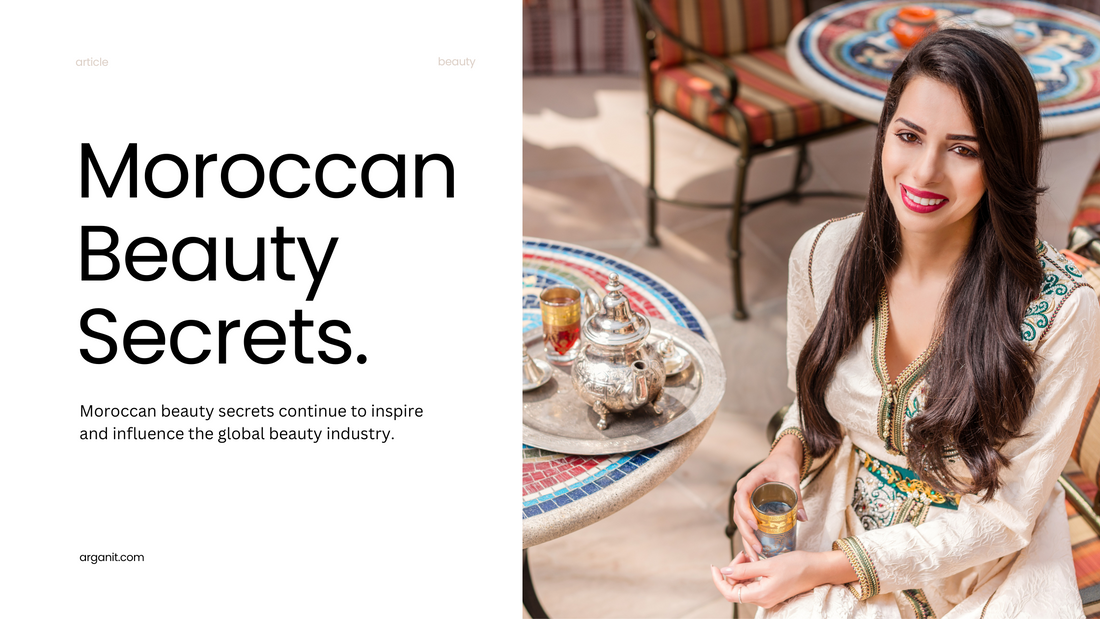A Century of Natural Elegance
Moroccan beauty rituals have been passed down through generations, reflecting the country's rich cultural heritage and focus on natural ingredients. Here's a look at some of the most enduring Moroccan beauty secrets and their evolution over the past century:
1. Hammam Culture:
- Historical Roots: The hammam, or public bathhouse, has been a central part of Moroccan culture for centuries. It's a place for relaxation, social interaction, and beauty rituals.
- Traditional Practices: The hammam involves exfoliation with a kessa (mitt) and black soap, followed by a steam bath and a relaxing massage.
- Modern Adaptations: While the basic principles remain the same, modern hammams often offer additional treatments like body scrubs, facials, and aromatherapy.
2. Argan Oil:
- Discovery: Argan oil, extracted from the kernels of the argan tree, has been used by Moroccan women for centuries.
- Nutritional Benefits: Rich in antioxidants and fatty acids, argan oil nourishes and moisturizes the skin and hair.
- Global Recognition: Argan oil has gained worldwide recognition for its beauty benefits and is now a popular ingredient in many cosmetic products.
3. Natural Ingredients:
- Rose Water: Moroccan women have long used rose water to soothe and hydrate the skin. It's often used in facial toners and mists.
- Clay Masks: Rhassoul clay, a natural Moroccan clay, is used to create exfoliating and detoxifying face masks.
- Henna: Henna is a natural dye used for hair and body art, with a long history in Moroccan culture.
- Natural Oils: Olive oil, almond oil, and other natural oils are used for hair and skin care.
4. Traditional Beauty Practices:
- Eye Makeup: Kohl eyeliner is a traditional Moroccan beauty practice, used to enhance the eyes.
- Hand and Foot Care: Moroccan women often use natural ingredients like henna and olive oil to care for their hands and feet.
- Hair Care: Traditional Moroccan hair care practices involve using natural oils and herbs to nourish and strengthen the hair.
Evolution in the Last Century:
While Moroccan beauty rituals have remained rooted in tradition, the last century has seen some notable changes:
- Globalization: The popularity of Moroccan beauty products has spread beyond the country's borders, leading to increased demand and innovation.
- Modern Adaptations: Traditional ingredients and techniques have been incorporated into modern beauty products and treatments.
- Sustainability: There is a growing emphasis on sustainability and ethical sourcing in the beauty industry, aligning with Moroccan values.
Moroccan beauty secrets continue to inspire and influence the global beauty industry. By embracing natural ingredients, traditional practices, and sustainable approaches, Moroccan women have preserved their heritage while contributing to the global movement towards natural and ethical beauty.

